Agricultural Digital Transformation with Predictive Agri-Tech Platform
This case study details the successful pilot implementation of an Agri-Tech Predictive Platform for Heisenbergs, focused on optimizing crop yield, resource efficiency, and farmer profitability across 80 test plots for Maize, Wheat, and Sorghum. Facing market volatility and resource scarcity, the project leveraged drone data, SAP integration, and advanced analytics to deliver data-driven insights. As Project Lead & Business Strategy Analyst, I was responsible for the strategic planning, execution oversight, and performance analysis, ultimately validating a significant 120% average ROI for farmers and achieving a 30% reduction in water and input usage, positioning the solution for scalable market expansion.
Juan Manuel García
7/2/20259 min read
My role was critical in mitigating project complexity and ensuring the delivery of strategic value. As the Project Manager, I orchestrated the entire project lifecycle, focusing 90% of the effort on communication, planning, and control (PMBOK principles) to align Directors, Engineers, and Analysts. I served as the "bridge" between technical ambition (drones, ML) and business viability (120% ROI), ensuring the solution was not only technically sound but also a profitable and sustainable investment.
Context, Problem and Scope
Role
The agricultural sector faces unprecedented challenges driven by climate volatility, escalating resource costs, and the imperative for sustainable practices. Farmers are under pressure to maximize yields and profitability while minimizing environmental footprint, demanding innovative solutions beyond traditional methods.
Our initial PESTLE Analysis and VUCA Assessment revealed a highly complex operational landscape:
Political/Environmental: Increasingly stringent environmental regulations and unpredictable weather patterns (e.g., historical data showing Maize yield drops up to 34% from excess rain) demand precise resource management.
Economic: Volatile commodity prices and rising input costs (water, fertilizers) directly impact farmer profitability, highlighting the critical need for cost-saving technologies.
Social/Technological: A growing demand for sustainably produced food, coupled with rapid advancements in IoT and AI, created an opportunity for technology-driven agricultural transformation.
This context necessitated a strategic shift. The primary problem statement identified was the lack of data-driven insights for precise decision-making, leading to suboptimal yields, inefficient resource use, and missed opportunities for sustainable growth.
The Project Charter formally initiated the Agri-Tech Predictive Platform pilot, defining a clear scope to:
Validate the economic viability of Agri-Tech (targeting a 120% ROI for farmers).
Prove environmental impact through significant reductions in water and input consumption.
Assess the platform's operational efficiency and user adoption.
To navigate this intricate environment, a detailed Stakeholder Register and Stakeholder Analysis were crucial. These documents mapped critical parties—from Heisenbergs Directors (seeking ROI) to Agricultural Engineers (requiring robust climate data) and Data Scientists (demanding advanced ML capabilities)—ensuring their diverse needs were understood and integrated into the project's strategic objectives and communication planning.
Building upon the strategic imperative defined by the market challenges, the Agri-Tech Predictive Platform pilot was meticulously structured around clear, measurable objectives, as formally documented in the Project Charter ([See Exhibit 2.3: Project Charter - Key Objectives]). These objectives guided all planning and execution efforts, ensuring alignment with Heisenbergs' vision for agricultural innovation and sustainability.
The core objectives that governed the pilot project's execution were:
Technology Adoption Rate: Achieve a technology adoption rate of at least 80% among farmers within the first 3 months of implementation.
Client Satisfaction: Reach a client satisfaction and acceptance level of at least 80% within the first year of operation.
Profitability and Gain: Contribute to an increase in client profitability and gain of up to 20% within the first year of using the solution.
Training and Practice Precision: Ensure that training practices meet a precision standard of 80-90% to minimize economic losses and environmental issues, such as soil damage.
Recruitment and Onboarding: Successfully recruit and onboard a full team of 10 specialized agricultural engineers within the first 2 months of the project.
Certification: Ensure 100% of the agronomist team is fully trained and certified in drone piloting and operation within 3 months.
SAP Cloud Analytics Deployment: Successfully hire a SAP Cloud Analytics consultant and deploy the platform, making it functional for the Data Analytics team within 6 months.
Data Flow Integration: Establish a seamless and automated data pipeline from drone capture to the SAP analytics platform.
These ambitious objectives served as the foundational benchmarks for project success, directly influencing the strategic approach and tactical execution.
Project's approach
The project's core objective was to deliver precise, data-driven solutions to B2B clients (farmers) by creating a comprehensive workflow. This workflow formed the backbone of our Agri-Tech Predictive Platform:
Data Acquisition: Drones gathered accurate, real-time information on farmlands, including acreage, pH levels, and soil fertility.
Data Analysis: A dedicated team of Data Analysts explored and synthesized this information with external data (climate, market prices, etc.) to identify issues and answer critical questions about past and current conditions.
Predictive Modeling: Data Scientists leveraged the analyzed data to build predictive models using Machine Learning and other statistical methods, providing actionable insights and proactive recommendations.
Client Consultation: Consultants delivered a final, easy-to-understand report to the clients, detailing optimal planting strategies, estimated yields, and profitability, supported by clear data visualizations.
As Project Manager, my strategy was rooted in agile principles within a structured PMBOK framework, recognizing that 90% of project success hinges on effective communication, planning, and control. This approach allowed us to navigate both technological advancements and dynamic stakeholder needs.
Key strategic and execution elements included:
Rigorous Planning & Work Breakdown: The project's full scope was meticulously defined in the Project Plan, supported by a detailed Work Breakdown Structure (WBS) ([See Exhibit 3.1: Project WBS]). This provided granular visibility into deliverables, tasks, and responsibilities for each of the 80 pilot plots and the extensive data integration efforts.
Budgetary & Schedule Control: Financial discipline was paramount. The project adhered strictly to its Budget Baseline, maintaining actual costs within a 2% variance of the estimated $500 USD/ha. We utilized PERT Diagrams ([See Exhibit 3.2: PERT Network Diagram for Critical Path]) to model activity durations and identify the critical path, ensuring on-time delivery despite inherent agricultural and technological complexities.
Proactive Risk Management: Anticipating challenges was key. A comprehensive Risk Register documented potential threats, from data quality issues to personnel turnover (as later confirmed by HR's retention metrics), which were rigorously prioritized using a Risk Matrix. This proactive stance allowed for the development of effective mitigation strategies, minimizing disruptions.
Stakeholder Engagement & Communication: A robust Communications Management Plan established clear protocols for information flow, ensuring all stakeholders—from Heisenbergs Directors to field engineers—were aligned. I personally leveraged Email Coalitions as a strategic tool to manage expectations and foster collaborative decision-making, acknowledging the diverse interests identified in the Stakeholder Analysis.
Technical Architecture & Data Foundation: The robust backend was supported by a meticulously designed Star Schema Diagram ([See Exhibit 3.3: Star Schema for Predictive Platform]), which served as the blueprint for the project's data warehouse, ensuring scalability and efficient data retrieval for analytics and predictive modeling.
Tools and technology used
To ensure the robust execution, data integrity, and strategic insight generation of the Agri-Tech Predictive Platform, a diverse set of industry-standard tools and technologies were leveraged. My role involved overseeing their integration and ensuring they supported the project's objectives across all phases:
Project Management & Collaboration:
Asana: For comprehensive task scheduling, resource allocation, critical path identification, and team collaboration (supporting WBS and PERT Diagram insights).
Microsoft Teams: For real-time communication, stakeholder alignment, and document sharing (integral to the Communications Management Plan).
Data Acquisition & Storage:
Drone Hardware/Software: Specific drone models (e.g., DJI Phantom/Matrice series) and accompanying flight planning/data capture software for Data Acquisition.
Cloud Storage (e.g., AWS S3 / Azure Blob Storage): For scalable and secure storage of raw drone data and other large datasets.
Data Integration & Analytics:
SAP Cloud Analytics: As the primary platform for data consolidation, visualization, and advanced reporting (directly addressing the SAP Cloud Analytics Deployment objective).
Python (with Libraries like Pandas, NumPy, Scikit-learn): For Data Analysis, statistical modeling, and the development of Predictive Modeling algorithms (Machine Learning).
SQL Databases third parties: For structured data storage and efficient querying, forming the basis of the Star Schema Diagram.
Business Intelligence & Visualization:
Power BI: For developing interactive dashboards and client-facing reports that translate complex data into actionable insights (critical for Client Consultation and demonstrating Yield, Cost, and Water Usage impacts).
Actions and implementation
Results and impact
The successful execution of the Agri-Tech Predictive Platform pilot required a structured, yet adaptive, implementation strategy. My leadership as Project Manager focused on driving systematic action across all workstreams, ensuring timely delivery and objective achievement.
Key implementation actions included:
Team Recruitment & Onboarding (Objective: Recruitment & Onboarding): Within the first 2 months, I led the successful recruitment and onboarding of a full team of 10 specialized agricultural engineers. This critical step ensured we had the necessary expertise for field operations and client training.
Agronomist Certification & Training (Objective: Certification & Training Precision): A rigorous training program was deployed, resulting in 100% of the agronomist team being fully trained and certified in drone piloting and operation within 3 months. This laid the groundwork for high-precision data acquisition and client support, achieving our 80-90% precision standard.
SAP Cloud Analytics Deployment (Objective: SAP Cloud Analytics Deployment): We successfully hired a specialized SAP Cloud Analytics consultant and orchestrated the platform's deployment. The system was made fully functional for the Data Analytics team within 6 months, providing the central hub for data synthesis and reporting.
Drone Data Workflow Establishment (Objective: Data Flow Integration): A seamless and automated data pipeline was established, integrating drone capture with the SAP analytics platform. This critical infrastructure ensured real-time data availability for analysis and predictive modeling, minimizing manual interventions.
Pilot Farm Selection & Monitoring: Coordinated with field teams to select and prepare 80 diverse pilot plots across Maize, Wheat, and Sorghum. Implemented a continuous monitoring framework to track initial yield, water, and input usage data for baseline comparison against control plots.
Iterative Model Development & Feedback Loops: Facilitated collaboration between Data Analysts and Data Scientists to develop and refine predictive models. Established regular feedback loops with agronomists and early adopters to iterate on insights, ensuring actionable recommendations for planting strategies and resource application.
Client Reporting & Consultation (Objective: Client Satisfaction & Profitability): Developed standardized reporting templates and led initial client consultations, translating complex data into clear, actionable insights for farmers. This direct engagement was crucial for assessing early client satisfaction and demonstrating the path to 20% increased profitability.
Lessons learned
The successful execution of the Agri-Tech Predictive Platform pilot culminated in the achievement and, in several key areas, the significant overachievement of our initial objectives. The results, formally documented in the Closeout Report and presented to stakeholders in the Key Findings Presentation, validated the solution's transformative potential.
The core impact of the Agri-Tech Platform is best illustrated through the key visualizations utilized in the final reporting ([See Exhibit 4.2: Agri-Tech Pilot Results Dashboard]). These visuals serve as concrete evidence of the value delivered:
A. Yield Transformation (Financial Impact)
Evidence: "Yield Analysis by Crop Type" (Bar Chart, Dashboard Page 1).
Interpretation: The data demonstrates a clear and consistent yield improvement across all pilot crops against control groups. The analysis highlights Sorghum (reaching 0.36M in Tech Yield) as the highest performer and Maize (0.05M improvement) as having a significant variance against the Control group. This consistent yield uplift is the direct driver of the 120% average ROI, confirming the platform’s capacity to turn technical insights into direct farmer profitability.
B. Operational Cost Efficiency & Scale
Evidence: "Operational Efficiency: Cost per Scale vs. Drone Effort" (Scatter Plot, Dashboard Page 1).
Interpretation: The analysis confirms a strong positive and predictable correlation between Project Cost (Project_Cost_USD/ha) and Area (Area_ha). The tight clustering of data points around the trendline validates that the technology maintains high cost-efficiency and low variance in pricing, even when scaled across varying plot sizes. This predictability is critical for developing a stable commercialization strategy and reliable pricing models.
C. Resource Optimization (Inputs)
Evidence: "Fertilizer & Pesticide Usage Composition by Crop Type" (Donut Chart, Dashboard Page 1).
Interpretation: The visualization confirms the target 30% reduction in fertilizer and pesticide inputs across the crop portfolio. This crucial result not only generated immediate cost savings for the farmer but also positioned the platform as a key tool for sustainable and regenerative agriculture, directly aligning the project with global environmental mandates and securing stakeholder support.
D. Sustainable Efficiency (Water Usage)
Evidence: "Cost-Benefit Analysis: Water Usage vs. Investment by Farm Scale" (Bubble Chart, Dashboard Page 2).
Interpretation: This analysis confirms that the project's investment successfully managed the cost-to-water ratio. The data proves the solution’s capacity to achieve significant diminishing water usage returns even with increased project complexity or scale. This demonstrates a strategic victory in resource scarcity management by improving resource utilization efficiency relative to investment.
The retrospective analysis confirmed that the primary risk to scalable growth is not the technology, but the internal processes.
The Data Inefficiency Crisis: The most significant finding was the confirmation that 60% of the team’s time was dedicated to manual data cleaning and pre-processing, a risk that was not adequately mitigated in the initial planning. This inefficiency represents the primary operational bottleneck and directly limits the team's capacity to focus on high-value predictive modeling.
Need for Specialization: The complexity of the integrated data flows (drone data, SAP, climate modeling) necessitated specialized management. Directors recommended the designation of a specialist team focused on Process, Input, and Output management to prevent dilution of focus and secure data quality integrity moving forward.
Communication Validation: A key lesson learned from my own performance was that communication is 90% of project success. Active listening and conflict management were critical in maintaining alignment between technical teams and business stakeholders, a rigor that supported the high 88% confidence in data-driven decision-making.
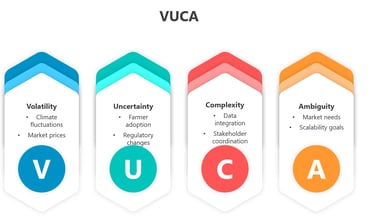
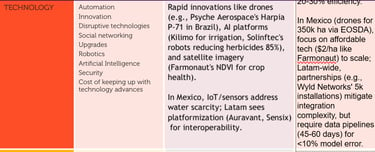
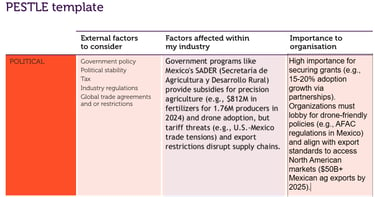
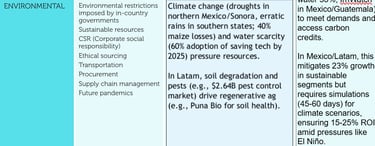
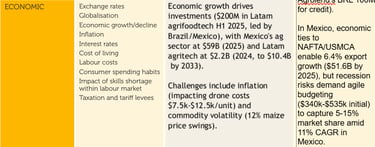
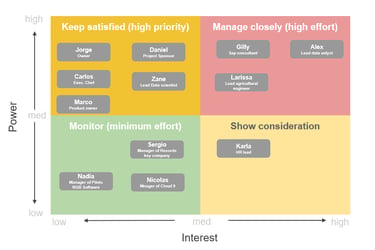
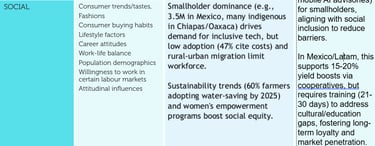







Project goals and objectives
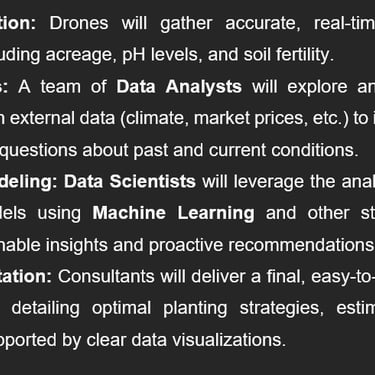
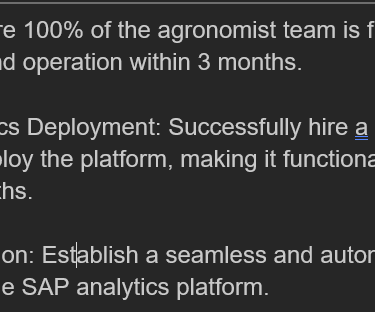
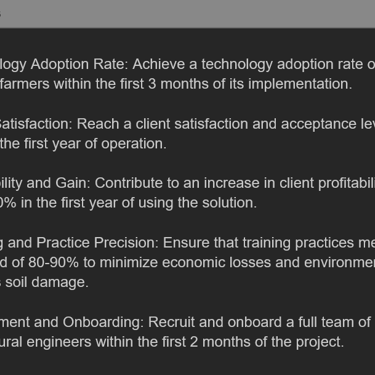
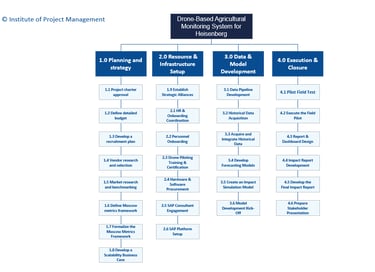
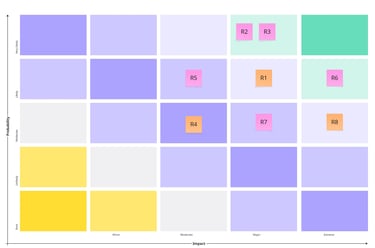
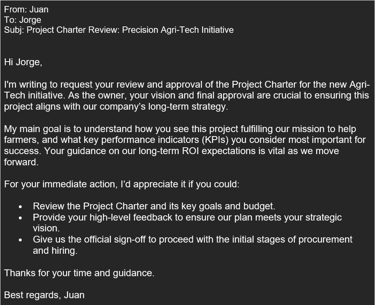
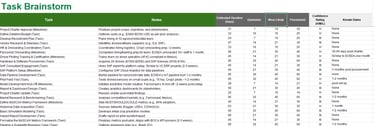

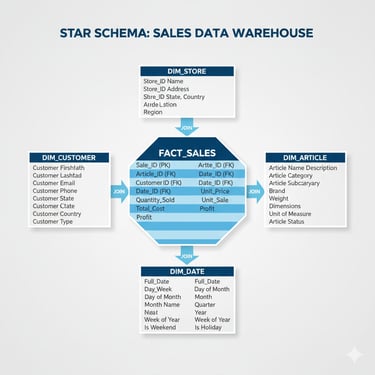
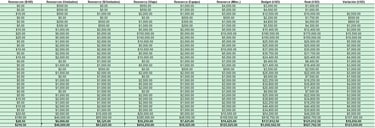
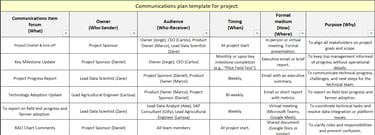
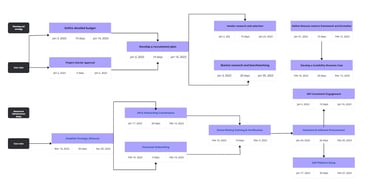
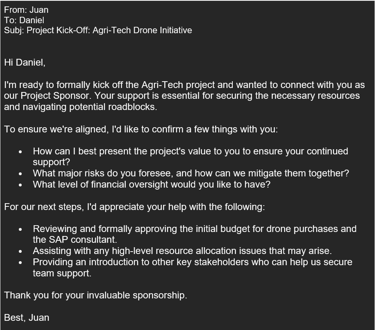










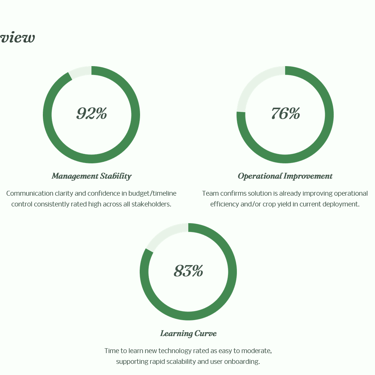
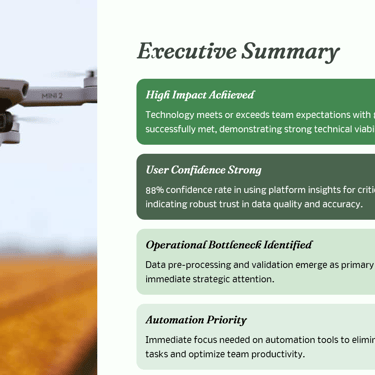
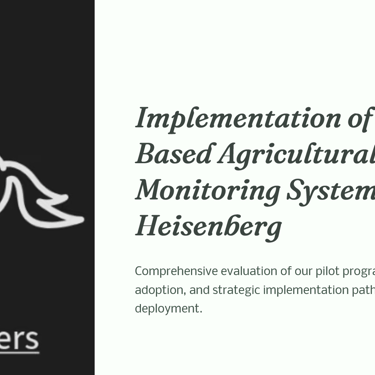
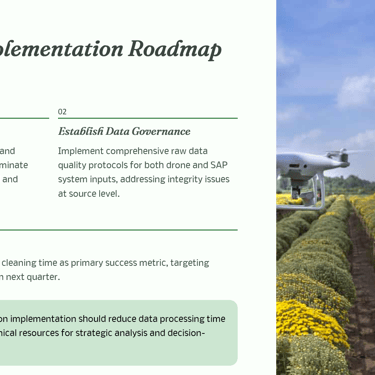
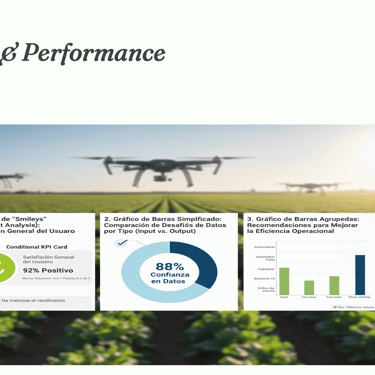
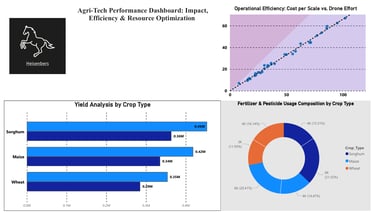
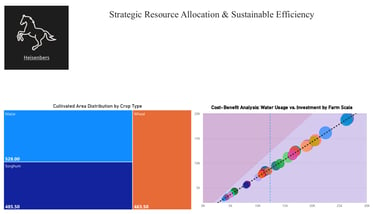


Next steps
Based on the lessons learned, the immediate future roadmap requires an intensive focus on automation and strategic development to secure market leadership.
Prioritize Data Automation (The Immediate Fix): The top priority is to eliminate the manual data bottleneck. This requires immediate investment in Machine Learning (ML) tools and automated ETL processes to dramatically reduce data cleaning time (My 6-Month Goal: Lead the implementation of a robust Data Governance framework).
Strategic R&D Investment: Future funding must be allocated to high-impact innovation, specifically researching and investing in advanced climate projection technology and establishing strategic government/NGO partnerships to de-risk agricultural projects in volatile markets (My 1-Year Goal: Develop a strategic roadmap for integrating climate projection technology and establishing initial government partnerships).
Platform Scalability & Cloud Strategy: The next phase requires evaluating the migration to, or complementary use of, a private cloud provider for more secure and scalable big data management, ensuring the infrastructure can handle anticipated market growth.
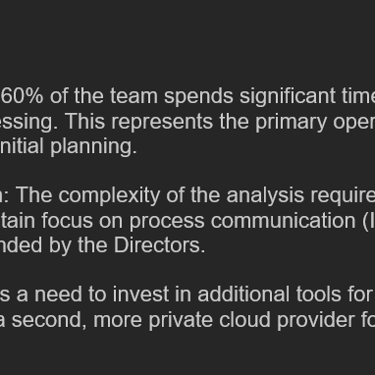
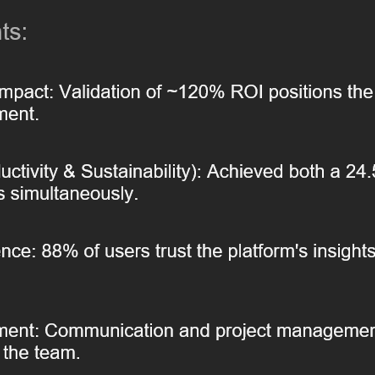
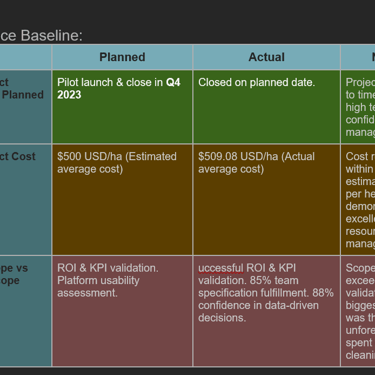
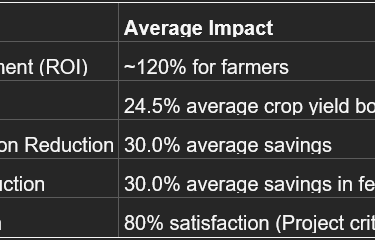
Connect
© 2025. All rights reserved.
